Australian Tropical Rainforest Plants - Online edition
Argyrodendron sp. Whyanbeel (B.Hyland 1106RFK)
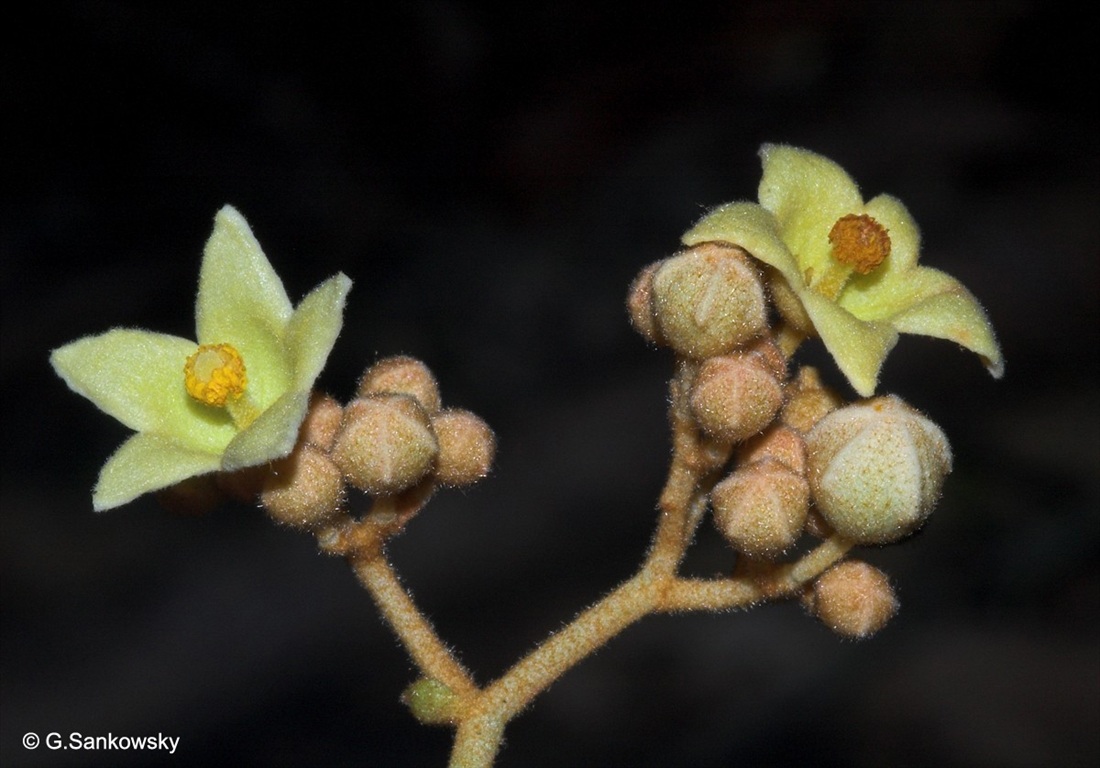
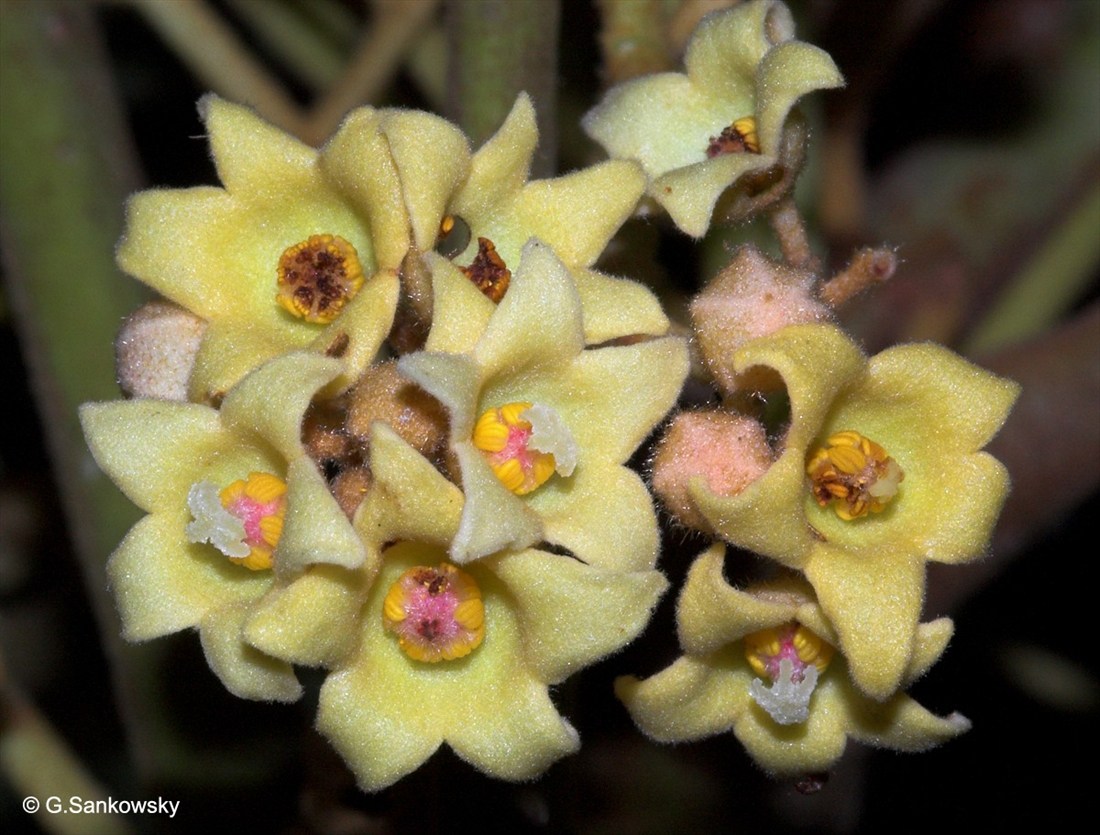

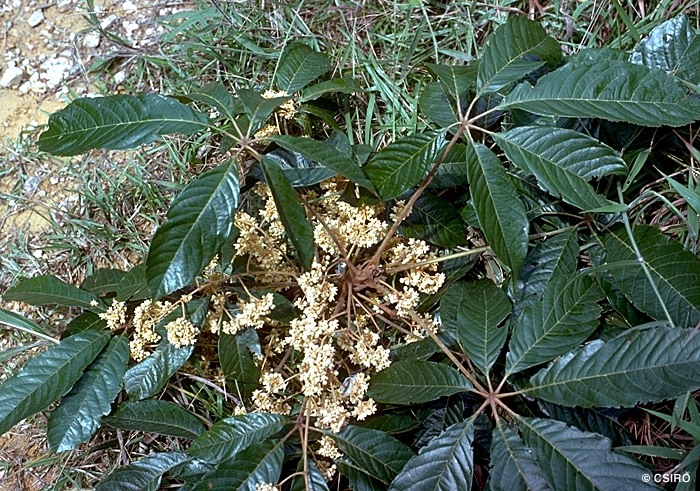
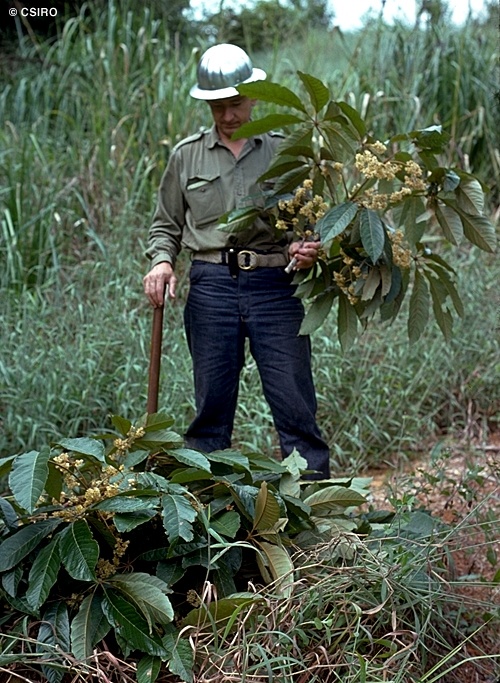
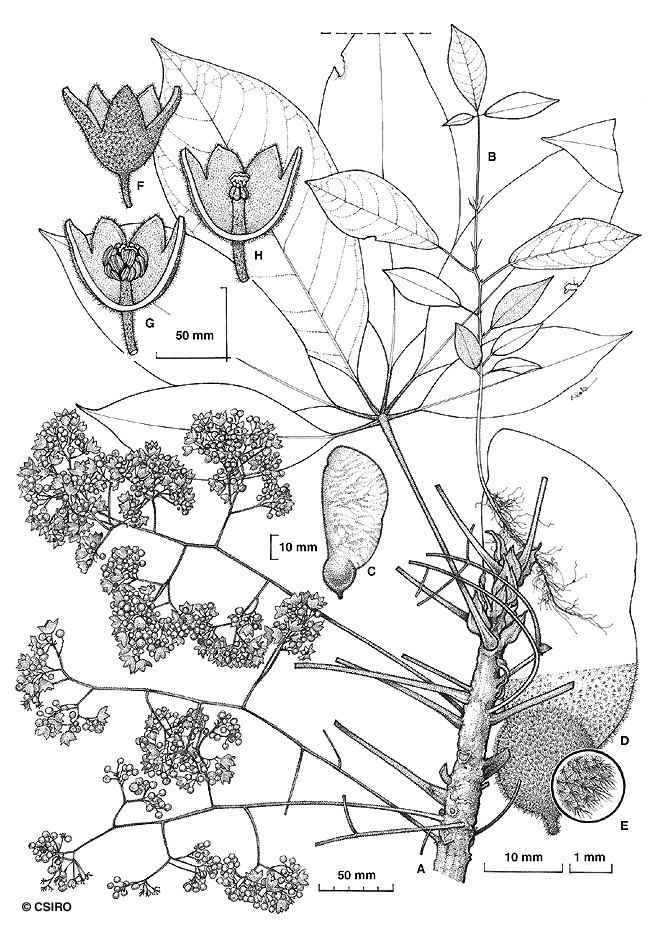



Provisional HISPID phrase name.
Oak, Palm Tulip; Oak, Tulip; Palm Tulip Oak; Tulip Oak
Fine oak grain in the wood and a corresponding pattern in the inner blaze. White granular stripes in the outer blaze.
Leaves usually palmate. Stipules quite large, about 12-35 x 6-10 mm gradually tapering to a fine point. Leaf bearing twigs and compound leaf petioles densely clothed in brown hairs. Pores in the twig pith readily visible to the naked eye. Leaflet blades about 11.5-37 x 5-13.5 cm. Midrib raised on the upper surface. Stellate hairs visible with a lens on the lower surface of the leaflet blade.
Cotyledons fleshy, about 9-11 x 6-8 mm, venation not visible. First pair of leaves broadly oblong to orbicular, white on the lower surface from scales. At the tenth leaf stage: leaflet blades white on the lower surface from scales, upper surface clothed in stellate hairs, midrib raised or flush with the upper surface; petiole and terminal bud clothed in stellate hairs; stipules large, subulate, hairy. Seed germination time 17 to 30 days.





